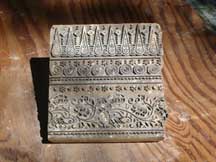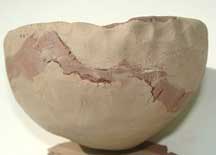 Seeker and potter Marjory Zoet Bankson has just published a new book called “The Soulwork of Clay” that takes the reader through a seven-step process of making clay into a pot, drawing parallels at each stage to the process of spiritual growth.
Seeker and potter Marjory Zoet Bankson has just published a new book called “The Soulwork of Clay” that takes the reader through a seven-step process of making clay into a pot, drawing parallels at each stage to the process of spiritual growth.
To read an excerpt, click “Read more” below…
Seeker and potter Marjory Zoet Bankson has just published a new book called “The Soulwork of Clay” that takes the reader through a seven-step process of making clay into a pot, drawing parallels at each stage to the process of spiritual growth.
An excerpt from the book follows….
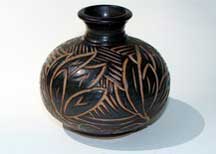
Ritual, Symbol, and Story
The raw material of clay is so common that we forget how important it has been in the history of the earth and of humankind. Is that because clay is so like us? So available and permanent, even without firing? Anyone could have the experience of taking mud from the edge of a pond and making a small figure with it. No special tools are required.
Nearly every culture mentions clay in its creation myth. The biblical creation story pictures God scooping up a handful of clay, shaping a human creature and breathing life into it. Thus spirit enters flesh according to that story, written down on tablets of clay some 5,000 years ago. The mystery of how life began is extended to include the sexual differentiation of man and woman—attraction and repulsion, the basis for love and passion and desire, as well as separateness and destruction. Feeling and imagination are included in this primal story which has so shaped our understanding of soulwork.
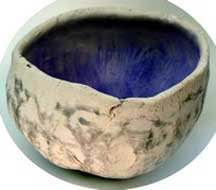
We are the storytellers and symbol-makers who work with clay to make things. Created with the capacity to wonder, to observe and examine the microscopic elements of life, to feel the whole in every part, and to create something new, we are instinctively drawn to clay as a natural medium for human creativity.
Because clay is part of nature’s cycle, it links us with a larger unified field of interconnection with all of life. Some of the marks and figures of early pictographs speak across the centuries of reverence and connection with all parts of the natural world. Ancient humans knew themselves to be part of a living network, an organic whole. But that connection with the unified field of life was largely unconscious. It would take the patriarchal period to achieve individual self-consciousness. Then Greek thought split body and spirit, associating spiritus with eternal ideals, light, air, and sky gods, which left the unconscious body as little more than a beast of burden. Religion picked up that theme by associating logos with reason, language, thought, purity, and, ultimately, with God as Father—which left the bloody mystery of body and birth to nature, earth, and Mother. The scientific revolution reinforced that split by associating consciousness with masculine thought and enlightenment, with feelings associated with unconscious feminine intuition.
We are all—men and women—children of that patriarchal period of history. And it has cost us dearly. We seem to have lost our sense of connection with each other and with the earth as the unified field in which we are interdependent with all things. We operate as individual units, barely conscious of the consequences. The industrial ideal of “progress” has allowed us to do irreparable damage to the earth, water supplies, and the atmosphere we breathe, and still we plunge on, accumulating more than we need or even want.
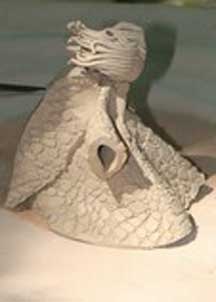
Even our sense of what is “art” has become fragmented. Art once flowed out of the natural rhythms of life and clay told the story of human civilization. The earliest sacred figurines were made of clay and hardened by fire. Bricks of clay and straw built pyramids and temples that are still standing after five thousand years. Fired bricks from Babylon still glow with vibrant color on the Gates of Ishtar. But today, fragmentation has made art the purvue of specialists. Although clay has long been considered a lesser art than painting or sculpture, ceramics also straddle the realms of spirit and of commerce—in danger of being captured by experts. Treasured bowls are bartered between modern museums for millions of dollars. Every day we make local decisions to remove art and music from the public school curriculum in favor of testable subjects. I believe this fragmentation is part of the reason why we humans can do so much damage to the environment without remorse: We don’t carry a picture of the whole; we don’t identify with creation’s story as our story, too.
At its core, soulwork is about recovering that unified field of interconnection among all things. It’s time to find our way to being part of the earth’s survival—and our own. I believe that something as simple as working with clay could provide the path. I’m not talking about becoming a potter, necessarily, but finding enough clay to make it part of our imaginative life. We can bring the best of our thinking skills to the intuitive field of sensate awareness and marry them together in the soulwork of clay. That will, in turn, give birth to new stories and rituals, new creativity that we need to heal the wounds that we ourselves have created so heedlessly. The capacity for recovering the sense of the whole is found in every person. This is work that everyone can do—the inner work of soulwork. 